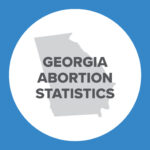Ignoring the Scientific Facts Doesn’t Make the Pain Go Away
Fetal pain, according to Rep. Dr. Kim Schrier’s statements at a recent hearing in the House of Representatives, is “pseudoscience, total baloney.” Interestingly, though she recalled caring for extremely premature babies during her pediatric training, perhaps the congresswoman was unaware that, according to the American Academy of Pediatrics, the medical standard of care for these little ones is to prevent pain, “not only because it is ethical but also because repeated painful exposures have the potential for deleterious consequences.”[1] As an actively practicing neonatologist, I offer here some of the scientific facts that inform how I practice and today’s standard of care.
The New England Journal of Medicine published two groundbreaking studies in 1987[2] and 1992[3] which included data from multiple lines of research as well as the authors’ new information. Both articles refuted the prevailing idea that term babies did not feel pain. The 1992 study remains particularly disturbing because it was a randomized trial that compared the outcomes of term babies who did and did not receive sufficient anesthesia during cardiac surgery. Statistically significant poorer intra-operative and post-operative outcomes were seen for the babies who received “lighter anesthesia” compared to those who had the benefit of “deep anesthesia.”[4] Today, these results are so uncontroversial that this study could not ethically be repeated.
As the size and gestational age of treated babies have decreased, studies demonstrating that pain affects premature babies too have increased. Statistically significant acute changes in heart rate, oxygenation, facial expression, and levels of stress hormones have all been documented.[5],[6] Additionally, despite this population of patients’ inability to consciously recall the painful event(s), long-term ramifications or a “procedural memory,” leading to abnormal behavioral patterns or altered sensory processing in later life have also been seen.[7],[8]
More recently, even fetuses’ responses to pain have been documented. In a study that measured maternal and fetal stress hormones, there were clear, statistically significant differences in the amounts of stress hormones sampled when the fetus received a blood transfusion “via the intrahepatic vein, which involves piercing the fetal trunk,” compared to through “placental cord insertion” (which has no nerves).[9] The authors of this paper had “previously reported that the human fetus can mount hormonal stress responses to invasive stimuli,” but because the follow-up study also measured the mothers’ levels, they could state that the hormonal changes were from the fetus and not their mothers.[10] These data contradict the unsupported congressional testimony.
Given recent research, two authors with opposing views on abortion re-evaluated the scientific research regarding fetal pain capability. They concluded, “evidence points towards an immediate and unreflective pain experience…as early as 12 weeks” and “especially after 18 weeks when there is good evidence for a functional connection from the periphery and into the brain.”[11]
Not only do the published data contradict the claim that fetal pain is “pseudoscience,” but medical practice does too. During fetal surgery, anesthesiologists conscientiously and routinely provide pain relief to unborn babies.[12],[13] For neonatologists, pain and its ramifications are so uncontroversial that recent clinical studies do not ask whether pain exists; rather, they explore not only ways of decreasing painful procedures for the most fragile babies at the edge of viability (22-23 weeks gestation), but also the value of reassessing all forms of uncomfortable touch and environmental interactions.[14] Centers have adopted this approach and are reporting improved outcomes.[15]
Thus, according to the mounting preponderance of scientific evidence, human beings in their fetal period of development (eight weeks of gestation to term)[16] are affected by painful stimuli both in the short and long term. Medical facts prove fetal pain is not “baloney” and they are consistent with clinical observations – ask a NICU nurse whose hand has been smacked by an angry 23-week preemie who does not want his temperature taken. Ask the parents and be prepared to listen to their detailed answers. During her testimony, Dr. Schrier disparaged those who think fetal pain is real and even blamed religion. I believe in God, but the reason I know fetal pain exists is the science and 20 years of caring for babies with fetal physiology.
[1] AAP Committee on Fetus and Newborn, “Prevention and Management of Procedural Pain in the Neonate: An Update.” Pediatrics 137, no. 2 (2016): e2015427. doi: 10.1542/peds.2015-4271
[2] Anand, K.J.S.., and P.R. Hickey. “Pain and Its Effects in the Human Neonate and Fetus.” New England Journal of Medicine 317, no. 21 (1987): 1321–1329. doi: 10.1056/nejm198711193172105
[3] Anand, K.J.S., and P.R. Hickey. “Halothane–Morphine Compared with High-Dose Sufentanil for Anesthesia and Postoperative Analgesia in Neonatal Cardiac Surgery.” New England Journal of Medicine 326, no. 1 (February 1992): 1–9. doi: 10.1056/nejm199201023260101
[4] Ibid, page 1
[5] Bellieni, Carlo Valerio. “Pain Assessment in Human Fetus and Infants.” The AAPS Journal 14, no. 3 (2012): 456–461. doi: 10.1208/s12248-012-9354-5
[6] Johnston, C. and Stevens, B. “Experience in a Neonatal Intensive Care Unit Affects Pain Response.” Pediatrics 98, no 5 (1996): 925-930.
[7] Van de Velde, Marc, and Frederik De Buck. “Fetal and Maternal Analgesia/Anesthesia for Fetal Procedures.” Fetal Diagnosis and Therapy 31, no. 4 (2012): 201–209. doi: 10.1159/000338146
[8] Lowery, Curtis L., Mary P. Hardman, Nirvana Whit Manning, Barbara Clancy, R. Hall, and K.J.S. Anand. “Neurodevelopmental Changes of Fetal Pain.” Seminars in Perinatology 31, no. 5 (2007): 275–282. doi: 10.1053/j.semperi.2007.07.004
[9] Gitau, R. et al. “Fetal Hypothalamic-Pituitary-Adrenal Stress Responses to Invasive Procedures Are Independent of Maternal Responses.” The Journal of Clinical Endocrinology & Metabolism 86, no 1 (2001): 104. doi: 10.1210/jcem.86.1.7090
[10] Ibid, page 104
[11] Derbyshire, Stuart W, and John C Bockmann. “Reconsidering Fetal Pain.” Journal of Medical Ethics46, no. 1 (2020): 3–6. doi: 10.1136/medethics-2019-105701
[12] Van de Velde, Marc, and Frederik De Buck. “Fetal and Maternal Analgesia/Anesthesia for Fetal Procedures.” Fetal Diagnosis and Therapy 31, no. 4 (2012): 201–9. doi: 10.1159/000338146
[13] Bellieni, C., Vannuccini, S. Petraglia, F. “Is Fetal Analgesia Necessary During Prenatal Surgery?” The Journal of Maternal-Fetal & Neonatal Medicine 31, no 9 (2018) 1241-1245. doi: 10.1080/14767058.2017.1311860
[14] Altimier, L. Philips, R. “The Neonatal Integrative Developmental Care Model: Seven Neuroprotective Core Measures for Family-Centered Developmental Care.” Newborn and Infant Nursing Reviews 13 no 1, (2013) 9-22. doi: 10.1053/j.nainr.2012.12.002
[15] Morris, M. et al. “Small Baby Unit Improves Quality and Outcomes in Extremely Low Birth Weight Infants,” Pediatrics 136 no. 4 (2015): e1007-e1015. doi: 10.1542/peds.2014-3918
[16] Moore, K. & Persaud T. Before We Are Born: Essentials of Embryology and Birth Defects, Saunders, 1993 pg 6.
























